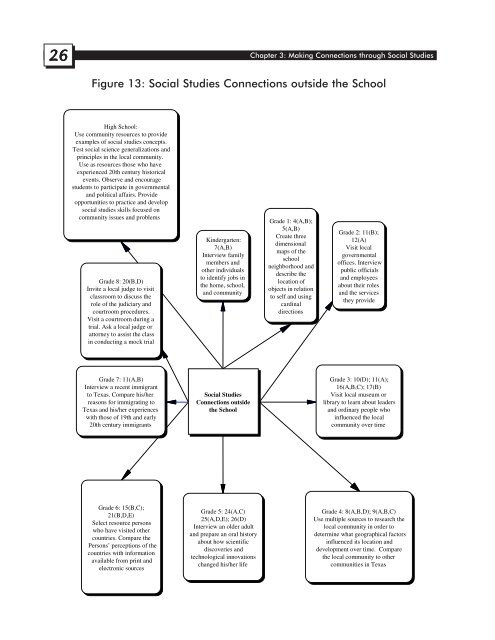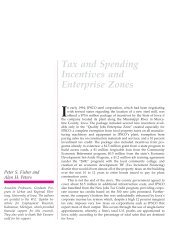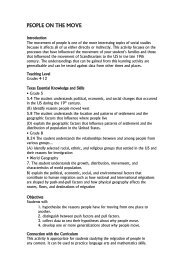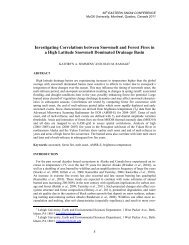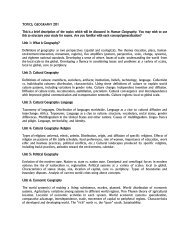Texas Social Studies Framework - Department of Geography ...
Texas Social Studies Framework - Department of Geography ...
Texas Social Studies Framework - Department of Geography ...
You also want an ePaper? Increase the reach of your titles
YUMPU automatically turns print PDFs into web optimized ePapers that Google loves.
26<br />
26<br />
Chapter 3: Making Connections through <strong>Social</strong> <strong>Studies</strong><br />
Figure 13: <strong>Social</strong> <strong>Studies</strong> Connections outside the School<br />
High School:<br />
Use community resources to provide<br />
examples <strong>of</strong> social studies concepts.<br />
Test social science generalizations and<br />
principles in the local community.<br />
Use as resources those who have<br />
experienced 20th century historical<br />
events. Observe and encourage<br />
students to participate in governmental<br />
and political affairs. Provide<br />
opportunities to practice and develop<br />
social studies skills focused on<br />
community issues and problems<br />
Grade 8: 20(B,D)<br />
Invite a local judge to visit<br />
classroom to discuss the<br />
role <strong>of</strong> the judiciary and<br />
courtroom procedures.<br />
Visit a courtroom during a<br />
trial. Ask a local judge or<br />
attorney to assist the class<br />
in conducting a mock trial<br />
Grade 7: 11(A,B)<br />
Interview a recent immigrant<br />
to <strong>Texas</strong>. Compare his/her<br />
reasons for immigrating to<br />
<strong>Texas</strong> and his/her experiences<br />
with those <strong>of</strong> 19th and early<br />
20th century immigrants<br />
Grade 6: 15(B,C);<br />
21(B,D,E)<br />
Select resource persons<br />
who have visited other<br />
countries. Compare the<br />
Persons’ perceptions <strong>of</strong> the<br />
countries with information<br />
available from print and<br />
electronic sources<br />
Kindergarten:<br />
7(A,B)<br />
Interview family<br />
members and<br />
other individuals<br />
to identify jobs in<br />
the home, school,<br />
and community<br />
<strong>Social</strong> <strong>Studies</strong><br />
Connections outside<br />
the School<br />
Grade 5: 24(A,C)<br />
25(A,D,E); 26(D)<br />
Interview an older adult<br />
and prepare an oral history<br />
about how scientific<br />
discoveries and<br />
technological innovations<br />
changed his/her life<br />
Grade 1: 4(A,B);<br />
5(A,B)<br />
Create three<br />
dimensional<br />
maps <strong>of</strong> the<br />
school<br />
neighborhood and<br />
describe the<br />
location <strong>of</strong><br />
objects in relation<br />
to self and using<br />
cardinal<br />
directions<br />
Grade 2: 11(B);<br />
12(A)<br />
Visit local<br />
governmental<br />
<strong>of</strong>fices. Interview<br />
public <strong>of</strong>ficials<br />
and employees<br />
about their roles<br />
and the services<br />
they provide<br />
Grade 3: 10(D); 11(A);<br />
16(A,B,C); 17(B)<br />
Visit local museum or<br />
library to learn about leaders<br />
and ordinary people who<br />
influenced the local<br />
community over time<br />
Grade 4: 8(A,B,D); 9(A,B,C)<br />
Use multiple sources to research the<br />
local community in order to<br />
determine what geographical factors<br />
influenced its location and<br />
development over time. Compare<br />
the local community to other<br />
communities in <strong>Texas</strong>


